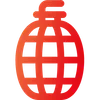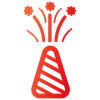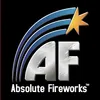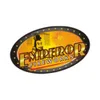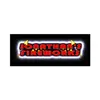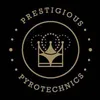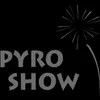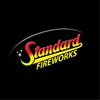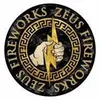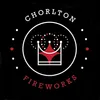How Are Fireworks Made?
Have you ever been in the middle of a firework display, head thrown back, mouth open, eyes shining in the reflection of a glittering night sky, and wondered how fireworks work in order to produce those incredible effects? If so, you’re in the right place. In this article, we’ll go over how fireworks are made.
What is Fireworks Night and why do we still celebrate it today? Read our guide to the medieval tradition.

How do fireworks work?
In its simplest form, a firework consists of some gunpowder or other explosive power in a containment like a rolled piece of paper, with a fuse attached. The banger fireworks of bygone times were made this in this simple way and gave children of past decades hours of irresponsible fun. Aerial fireworks (fireworks designed to shoot up into the sky) are a little more complex to make this action take place, they consist of several more components:
1. The stick
The literal stick that the firework is attached to. Usually made of wood or plastic, the stick allows the firer to make sure the firework goes in the direction they want it to. This is particularly useful if you’re preparing multiple fireworks and want to judge what your display will look like in action.
2. The fuse
The fuse is responsible for activating the firework once lit by the firer. The fuse will burn up to the charge and trigger the firework to launch. Firework cakes and barrages consist of several individual fireworks all attached by one single fuse. As the fuse burns it will light each shot in turn in a way the manufacturer has designed. Cakes and barrages are particularly convenient for producing a whole display while only needing to be lit once.
200 Shot Barrage Firework
3. The charge
The job of the charge is to launch the firework up into the sky, away from spectators to a safe distance. The charge will also lift the firework to a preferred viewing height so the effects can be seen properly. The charge is traditionally made with gunpowder, Potassium Nitrate, Charcoal, and Sulphur, although some recipes vary nowadays. Some fireworks, like fountains, do not involve a charge at all as their effects are designed to be watched from the ground.
4. The effect
The effect is the star of the show. This is the part of the firework that produces the light, flames, sparks, colour, sounds, and patterns of a firework that you see in the sky. Effects can be quite complicated in order to produce the desired results. Different explosives and chemicals are packed into separate compartments that go off at different stages in the firework’s life when the fuse reaches them. These are known as separate ‘stars’ in the overall effect of the firework.
5. The head
The head is the top of the firework. These are often designed in a cone shape to make them more aerodynamic.
Low Noise Fireworks
Another component often included in the effect part of a firework is known as the salute. The salute is responsible for making the signature loud bang that we associate with a firework. Low noise fireworks are made in without a salute in an effort to reduce their volume. Low noise fireworks are also made with smaller effects and lighter lift charges. Find out more about what to expect from low volume fireworks.
Chemical Reactions in Fireworks
The colours produced by a firework are the result of metal compounds called metal salts burning at very high temperatures. Different metals produce different colours, these are some of the first metals that were used to produce different colours in fireworks:
- Arsenic sulphide (yellow)
- Copper acetate (green)
- Lead carbonate (purple-white)
- Mercurous chloride (white)
When were fireworks invented and what were they like hundreds of years ago? Find out in our blog.
What are fireworks like sparklers made from?
Sparklers are a lot different to conventional fireworks, but they use the same basic ingredients. Sparklers consist of a metal stick for a foundation, which is then dipped in a combustible batter of different chemicals designed to produce the desired effect. Among other ingredients, the combustible batter will include a metallic fuel like iron (orange sparks) or Titanium (white sparks), Sulphur or Charcoal to control burning speed, an oxidiser like Potassium Nitrate, and colourants.
Many different types of fireworks produce highly varied effects but the basic foundations of each are generally the same, consisting of a charge to launch it, a fuse to light it, and chemicals to produce effects.
The makeup of a firework might sound simple, but it’s actually a delicate art that is highly dangerous if you don’t know what you’re doing. More to this, making fireworks can have serious legal consequences. Find out more in our article Homemade Fireworks: Risks and the Law in the UK.
350 Barlow Moor Rd
Chorlton
Manchester, M21 8AZ
07810 222123
info@chorltonfireworks.com








